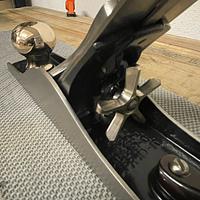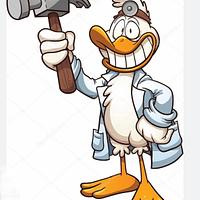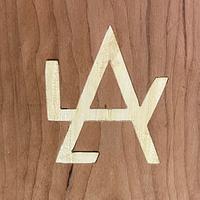
DevinT
in about 3 years
Urban Ore #3: Proportional Dividers
This is
part 3
in a
35 part
series:
Urban Ore
-
Wooden tool box
-
Proportional Dividers
-
Shoulder plane with Rosewood
...
- Wooden tool box
- Proportional Dividers
- Shoulder plane with Rosewood
For $15 — yes, fifteen U.S. American simoleons (dollars) — I picked up this strange tool in a nice wooden box. I didn’t even know what it was until I got home. Glad I bought it.
For anyone that has done drafting by hand, this won’t be a mystery. But for me, this is like finding a device that summons the Devil to perform dark arts. After I found out what it can do, I am blown away.
First let us see the tool:
It is a Keuffel & Esser Co. set of Paragon proportional dividers. But wait, there is a whole lot more.
The box has a secret compartment.
The documentation is printed on 127 year old “cardstock” which is closer to some kind of fabric. I know it is 127 years old (at least) because of a 1897 copyright in the bottom right corner.
Check out this material …
Just learning how to use this thing was a challenge. It is truly magical. Let’s say I want to take a distance that is evenly divisible by 3 and convert that into 8 equal parts.
Positioning the pivot on the proportional dividers through a rack and pinion system with a Vernier scale is absolutely brilliant. According to the guide, 3:8 ratio is setting 545. So I move the pivot to 545 …
There it now reads 545 (the main scale is in 10’s so when we saw the 0 of the Vernier scale line up with 50 we were at 500 — then we advanced slowly to 540 then 545). If you know how to use a Vernier caliper it is easier.
Once we had the setting of 545 dialed in, we could effectively perform a 3:8 ratio calculation of any distance.
So I drew two parallel lines on a piece of 1/2” plywood and then opened the big side of the dividers enough to measure out 3 equal parts between a set distance. I then flipped the dividers around to the small side and over the same distance instead marked out 8 equal parts. The tool works! I couldn’t believe my eyes.
Phenomenal!
Just one thing left. Inside the box is also a paper labeled “Mayan Stela 11” and a setting. A strange setting. 56.25 would be hard to dial in and be rather large and super tiny on the other end. Not sure if Sir Herrick was an archaeologist working on Mayan temples. Maybe this some Indiana Jones stuff that would unlock the arc of the covenant!
What are my plans for this tool?
Marking out dovetails? I seems like overkill. Carvings? Maybe. Dunno yet, but what a find!!
15 Comments
working with my hands is a joy,it gives me a sense of fulfillment,somthing so many seek and so few find.-SAM MALOOF.
working with my hands is a joy,it gives me a sense of fulfillment,somthing so many seek and so few find.-SAM MALOOF.
Put quite simply, if you need to transfer a measurement from one object to another, this is the tool. While a set of regular dividers can do that, regular dividers will only ever allow you to transfer a measurement without modification.
But what if you need to either enlarge or shrink the item to fir? That’s where these come into play. Need a 2:1 ratio? Position the pivot such that anything measured with the big end produces a measurement in the small end that is exactly one half the larger end.
I think this video sums it up quite well:
Used by artists as well
working with my hands is a joy,it gives me a sense of fulfillment,somthing so many seek and so few find.-SAM MALOOF.
I liked watching the two videos you posted. Take everything with a grain of salt. I would definitely prescribe that tool.
Dr. Quackner
The Other Steven
working with my hands is a joy,it gives me a sense of fulfillment,somthing so many seek and so few find.-SAM MALOOF.
Carey Mitchell
I look forward to hearing any interesting ratios you come up with
--Nathan, TX. Hire the lazy man. He may not do as much work but that's because he will find a better way.
https://cdnc.ucr.edu/?a=d&d=LAH19050430.2.40&e=-------en--20--1--txt-txIN--------
Engineer/inventor. Based out of Illinois but the above news article places him in Los Angeles in 1905. There in the west to demonstrate his new invention (described in the above article; having to do with making compasses more accurate).
The note about Mayan Stela 11 (in the proportional divider case that I purchased with Herrick’s name) I contend, is still some discovery he made about Mayan support columns (called Stelae [plural] or Stela [singular]). Nobody would have dialed-in such a precise pivot point ending in .25 without immense purpose.
--Nathan, TX. Hire the lazy man. He may not do as much work but that's because he will find a better way.
































